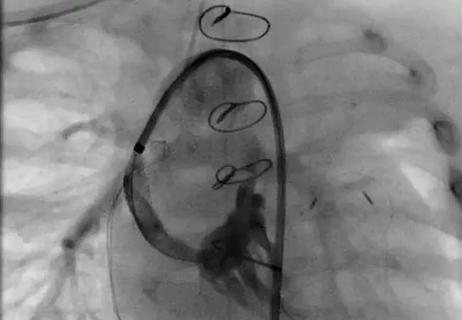Findings from a national database study

By Tara Karamlou, MD, MSc
Advertisement
Cleveland Clinic is a non-profit academic medical center. Advertising on our site helps support our mission. We do not endorse non-Cleveland Clinic products or services. Policy
Socioeconomic position and racial/ethnic factors are critical, yet under-recognized factors that impact death and complications in patients with congenital heart disease (CHD). In our recently published paper, “Widening our Focus: Characterizing Socioeconomic and Racial Disparities in Congenital Heart Disease Outcomes,” we investigated the current racial/ethnic and economic geographic landscape for patients with congenital heart disease at 52 hospitals in the United States1.
Leveraging this national sample, we also described the relationship of socioeconomic and racial/ethnic (SER) factors to in-hospital outcomes and identified interactions among specific determinants mitigating or potentiating adverse outcomes. We were particularly interested in whether specific hospital characteristics, such as annual case volume, might reduce the impact of SER or, alternatively, whether volume may be less important if specific hospitals in geographically-enriched regions developed more evolved processes or safety nets to resolve healthcare disparities.
Our study was unique in that it included patients undergoing congenital heart surgery (CHS), as compared to those admitted for other reasons, in order to understand whether specific points along the CHD care continuum could be identified where disparities associated with poor outcomes are magnified. Interestingly, despite the fact that CHS patients were older and had higher median income, risk of in-hospital death was similar among both the surgical and the non-surgical group.
Advertisement
Overall, the CHD population has a variable racial/ethnic distribution, which may impact access to high-quality medical services and the equitable provision of state and federal services. We found that while Latino patients were primarily located in California and Texas, Native Americans were primarily located in the southwest, and Black and White patients were fairly scattered, with more Black individuals concentrated in the Southeast. The proportion of patients living below the poverty level was highest in the South (20%) and New Mexico (20%), where Black and Native Americans, respectively, predominantly reside. Median neighborhood household income was generally substantially lower among American Indian ($35,912) and Black ($36,479) patient populations.
Two findings in our study are worth highlighting. First, the relationship between median neighborhood household income and mortality is parabolic rather than linear, as previous studies have described. Patients of both lower median income and higher median income fare worse compared to patients with median neighborhood household income between $72,000 and $80,000. We posited that higher-income patients, who are financially equipped to travel, might be accessing more complex care that is delivered only at regionalized centers (i.e. transplant, unifocalization of major aortopulmonary collateral arteries). Despite treatment at centers of excellence, mortality is still high for these diagnoses and procedures.
Second, we found an interaction between Black race and neonatal age, such that Black neonates (both in the surgical and non-surgical cohorts) fared better than neonates from other ethnicities/races. Further investigation revealed that hospital length of stay among this group was significantly longer than other neonates after adjustment for complexity and other factors (median 51 days vs. median of 32 days), suggesting that current inpatient processes may be leveraging in-hospital care or modifying care pathways in other tangible ways.
Advertisement
There is much to be learned to resolve the disparity equation in CHD. Improving safety nets across the entire care continuum coupled with disciplined commitment to reduce implicit biases that fracture educational initiatives, are central to moving the needle in a positive direction.
Reference
Karamlou T, Hawke JL, Zafar F, Kafle M, Tweddell JS, Najm HK, Frebis JR, Bryant RG 3rd. Widening our Focus: Characterizing Socioeconomic and Racial Disparities in Congenital Heart Disease. Ann Thorac Surg. 2021 Apr 16:S0003-4975(21)00700-1. doi: 10.1016/j.athoracsur.2021.04.008. Epub ahead of print. PMID: 33872577.
About the author: Dr. Karamlou is a pediatric and congenital heart surgeon at Cleveland Clinic Children’s and Professor of Surgery, Cleveland Clinic Lerner College of Medicine at Case Western Reserve University.
Advertisement
Advertisement

A reliable and reproducible alternative to conventional reimplantation and coronary unroofing

Case provides proof of concept, prevents need for future heart transplant

Proof-of-concept study finds technology improves quantitative evaluation of blood flow characteristics

Study examines data and clinical implications for performing Ross procedures in infancy versus later in life

Expert panel advises a two-tier structure for surgical centers

Case is first of its kind to obviate heart transplant successfully

New findings on aortic root position and features may lead to safer valvar surgery

Surgeons reassured by low risk of harm